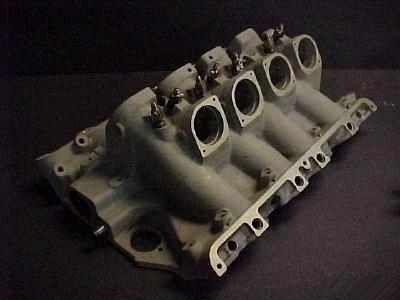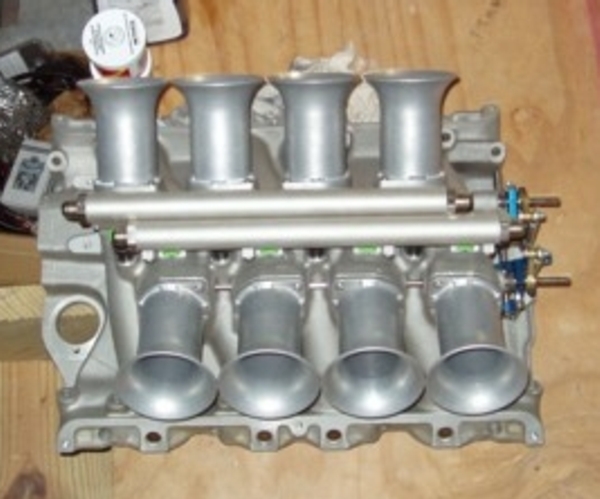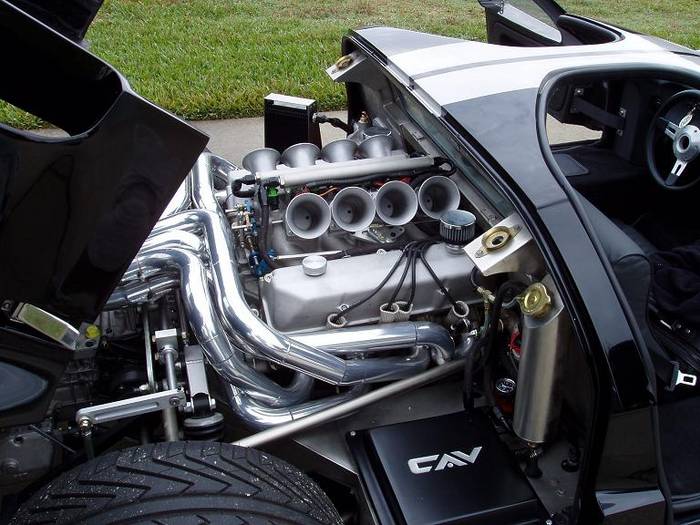Quote:
|
Originally Posted by jetenginedoctor
The TwEECer R/T is money a lot better spent. The factory EEC-IV engine control strategy isn't difficult to work with if you take the time to read up on it a bit. For $550, you get all the programability you'll ever need in a MAF engine management system, and an almost unlimited CHEAP supply of replacement ECUs should you ever need one. In other words, I can put my hand on a working A9L ECU any day of the week for $100 or less. An SVO-EPEC is rare as hen's teeth, and relying on one for your car to run correctly is a big uh-oh if you actually DRIVE your car more than 100 miles from home.
|
To make mine even rarer, it is the automatic version.

I have posted, above in this thread, and before: buy the ECM LAST. ECM's are changing and improving every day, from OEM's and the aftermarket. For your $550 TwEECer, I can buy two used version 6 FAST's. Either choice would work for someone like me, on the street, 100 miles or 1000 miles. The reason I have the EPEC is TwEECer came out and pretty much obsoleted it; doesn't mean it doesn't work. Doesn't mean that if it burns out I won't settle for anything other than an EPEC. Doesn't mean much of anything except it was cheap and it'll work as well as any A9L modified with the TwEECer system.
So again, this thread is titled "Best FI for the price" or something like that. Using that criteria, buy used, buy only what you need, and buy something that is supported or that you are able to handle yourself.
If you're not too familiar with the basic principals of efi, hire a tuner. If you want to learn or ARE familiar with efi, do it yourself.
Quote:
|
Originally Posted by jetenginedoctor
It's not a matter of being critical, it's a matter of being the smart way to do it. Putting the injectors further upstream from the intake valves increases the effect of port wetting (Tau) and makes tuning transients a huge pain in the ass. Furthermore, the injector fires on a stagnant air column far more than it does a moving column. The "importance" of firing the injector while the intake valve is open is simply not what many arm-chair engineers will try to tell you. Frankly, injector timing makes almost NO difference in performance, and very few tuners (much less OEM calibration engineers) have the equipment or understanding at their disposal to really get much out of manipulation of the injection phase events.
|
Sequential efi from OEM's, and even the aftermarket, are only truly sequentially fired up to about 2,500 rpm. Above 2,500 rpm they usually go to bank-fire mode. So no, injector timing makes little difference. Did I say it did?
As for mounting the injectors high? Here's a
factory Ford (racing) injection manifold for the tunnelport, with the injectors something like 8 inches above the head/intake interface...

Seemed to work alright.
That's not my intake. I have no association with it other than having paid attention to its progress from raw casting (from Dove) to being installed in a CAV GT-40.
I have injected a similiar intake for the FE. Not a tunnelport. My injectors are mounted at a similiar point on the intake. Frankly, I have NO idea what you're talking about "tuning transients" issues. Works fine. Actual experience talking here.
Quote:
|
Originally Posted by jetenginedoctor
This really isn't true either. Because the injectors don't/won't/can't always fire into a column of intake charge headed past the intake valve and into the cylinder, there is a certain amount of fuel that will be carried into the plenum due to inlet charge reversion. The more aggressive the cam profile, the greater the charge reversion, especially at low engine speeds. Where this becomes a problem is the fact that you end up with a huge amount of cylinder-to-cylinder "charge robbing" that causes each individual cylinder to have wildly varying air/fuel ratios despite the fact that each has injectors firing the SAME amount of fuel into the inlet port. This will cause terrible idle and drivability issues that can only be tamed (partially) by adding a bunch more fuel to the calibration at those lower engine speeds resulting in fouled plugs, cylinder wall washdown, excessive fuel consumption, excessive emissions, etc. Bottom line, putting the injectors at the far end of the inlet port is simply not a good idea.
|
I have no idea what you're talking about here...is this about a throttle body system with the injectors mounted above a common plenum, basically an electronic carb? If so, then no, I don't think that's a good setup for the above reasons. For port injection, with the injectors mounted midway down the individual intake runners, it works.
Quote:
|
Originally Posted by jetenginedoctor
I'd bet money that you were injecting into the plenum of a single plane 4bbl caburetor style intake manifold, right? Again, for the reasons mentioned above, it is a far better idea to fire the injectors onto the backs of the intake valves.
Brian Kennedy
BMEP Fuel & Tuning
|
You'd lose your money. See above. You seem to be a slave to conformity. My posts in this thread just say, don't believe everything the 'experts' tell you, sometimes they don't know everything, haven't seen everything.
Where 'experts' come in handy is, if you want a fast, simple, trouble-free install. They will open the boxes, wire things up, and load already tested maps into your system, and you'll be good to go. A LOT of people want that, and that kind of service is sought out. And I have no problem with those systems and people. I am merely presenting an alternative path.
.................................................. .................................................. ..
Again, not mine, I'm not associated with the install below in any way, and can provide no details about it other than it scares the bejebus out of its owner.


I'm out of this thread. Good luck to all.